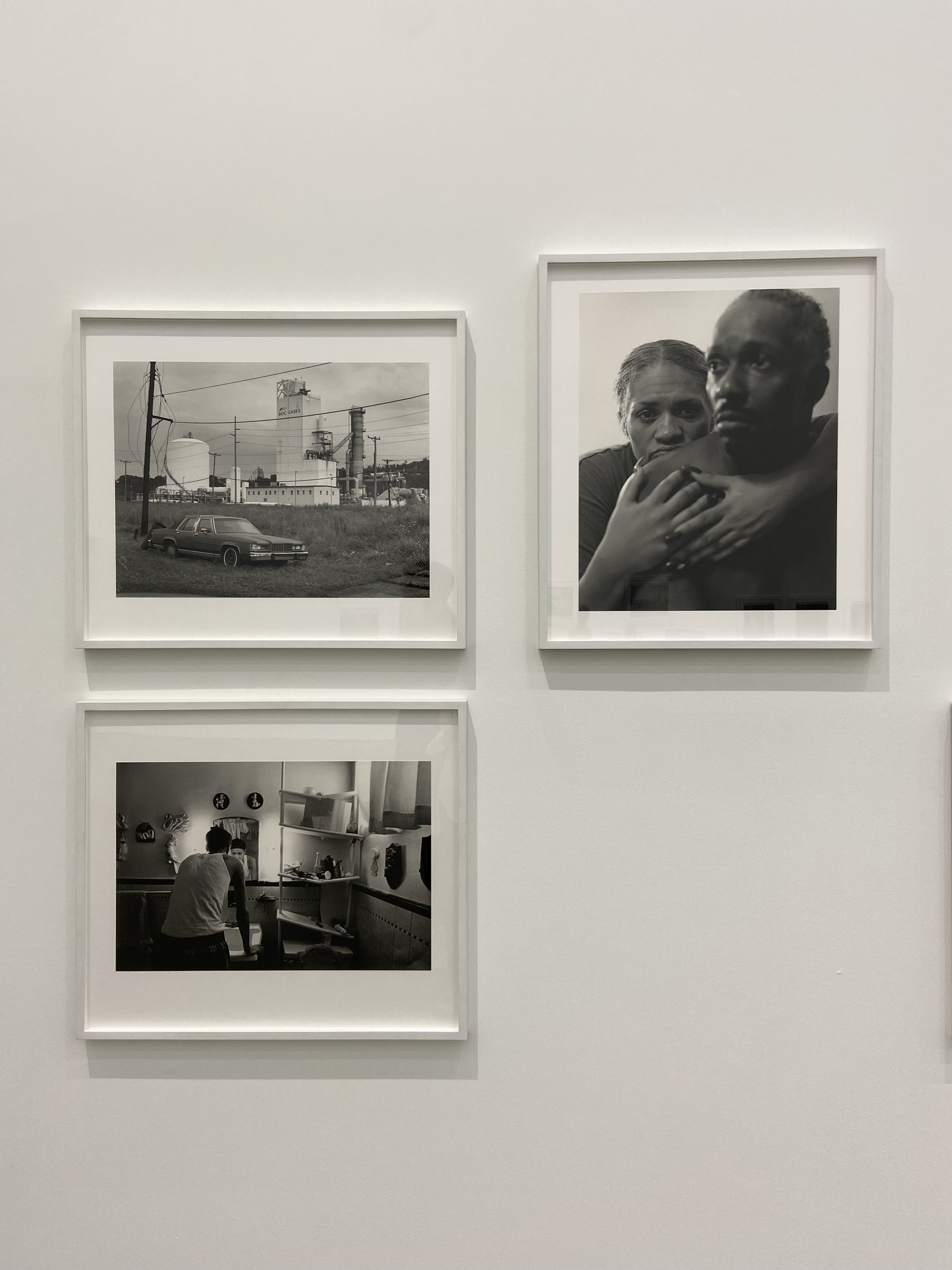Foreign Correspondence: Commodity Fetish
“Rust” at Sprüth Magers Berlin
July 2 – August 27, 2022
The Rust Belt describes that section of the Midwest and Northeast that was once a hub for industrial manufacturing but is now defined, as the name implies, by economic decline and urban decay. It is a relic of an idealized economic past, one in which some kind of working-class existence thrived, now ravaged by neoliberalism. Its residents have become a decisive political constituency for the United States’ failing electoral system, yet the name acts as a self-fulfilling prophecy: Reduced to its most negative attribute and exploited as such for political capital, the Rust Belt is fated to remain in its blighted state.
Thousands of miles away in Berlin, Sprüth Magers organized a group show around this region and its socioeconomic deterioration over the last 50 years. “Rust” includes photographs by Bernd and Hilla Becher, Stephen Shore, and LaToya Ruby Frazier “looking at the decline of the American Rust Belt.” Their disparate formal languages cohere around a shared contemplative tone: The Bechers’ series of highly aestheticized blast furnaces, alienated from their locality and devoid of any human figures give way to Shore’s quiet scenes of empty diners, overgrown yards, and brutal industrial landscapes caught in just the right light. Here, the photographers’ gazes feign romance and nostalgia in place of devastation. The gaze changes radically with Frazier’s work, intimate and tender portraits of the artist, her mother, and her grandmother in personal and, at times, vulnerable settings in Frazier’s hometown. Despite being produced decades later, Frazier’s work depicts a landscape that has become only more dire, documenting the persistence of its neglect.

What to make of these works — testaments to systemic and unrelenting social and economic disrepair — in this setting, glistening under fluorescents in the gallery’s massive, echoing hall? This tension marked the show: the impoverished heartland meets the cosmopolitan white cube. At the opening, European collectors from the metropole glanced at the photographs, so far away from their own reality, before swilling prosecco at the private reception in the gallery’s garden. It was impossible to overlook the commercial setting, to ignore that these works are commodities for sale and, with an eye to Frazier’s concurrent solo exhibition at the Kunstverein in Hamburg and the Bechers’ ongoing retrospective at the Met, ones whose value is sure to appreciate.

Of course, this phenomenon — capitalizing politicized art — is a feature of the market-driven art world; “Rust” is not an aberration, just a symptom. There is an important distinction to be made between Frazier’s first-person narration and the formal agendas that foreground the Bechers’ and Shore’s photographs. Their politics of looking is uneven; it is a question, as Tong Lam has articulated, of the degree to which they capture the social world without reinforcing the reality produced by the discursive logics of capital and state power. Even still, the works are equally absorbed into the locus of the art market, and this distinction has little, if any, effect on how they circulate in the economy. In fact, this show suggests that there is something highly marketable about suffering and decline, at least in its geographically distant and aesthetically mediated form.